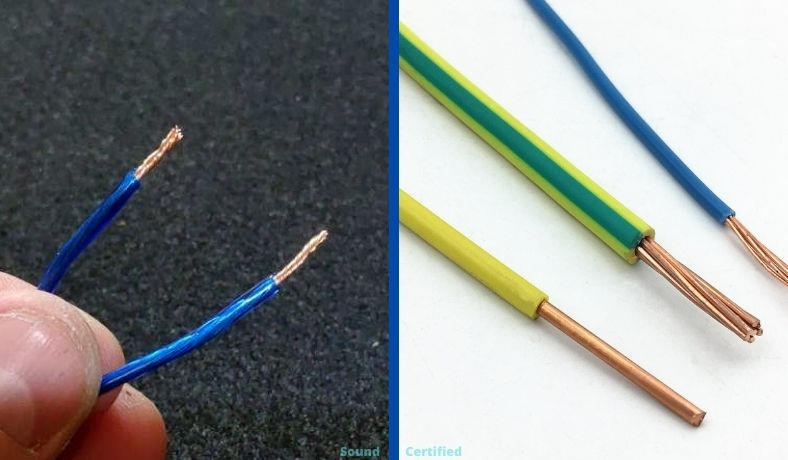In this article, I’ll tell you everything you need to know about electrical wire vs speaker wire differences. As it turns out, yes, you can use one instead of the other sometimes.
Read on to find out more!
Contents
Speaker wire vs electrical wire differences: are they the same?
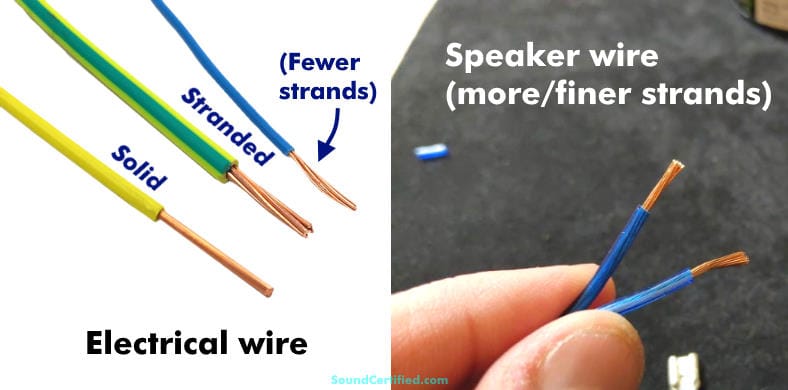
The simplest answer is that speaker wire and electrical wire are very similar but have slight differences. The particular type of electrical wire matters as some types are very different from speaker wire.
- Both speaker wire and electrical wire such as lamp cord or hookup wire typically use stranded wire conductors. However, speaker wiring often has more strands for better flexibility in wall or ceiling installations or car audio speaker wiring, for example.
- Electrical wiring used in homes and buildings can be very different: those use solid conductors and insulation that is less flexible and can be very hard to strip off.
- Speaker wire is usually marked with a speaker polarity indicator while electrical wire is not. This is because alternating current (AC) home wiring is non-polarized.
- Speaker wire is designed to be easy to separate and strip during use.
- Electrical wire may or may not be paired and may have a 3rd conductor or even more. Speaker wire uses a pair of wire conductors.
Both types use the American Wire Gauge (AWG) size chart but it’s important to follow the wire ratings for stranded, not solid core wire when sizing speaker wiring.
A speaker wire gauge, listed as a standard AWG size, tells you how large the electrical conductors are along with how much current (amps) a given gauge can handle.
Solid wire vs stranded wire
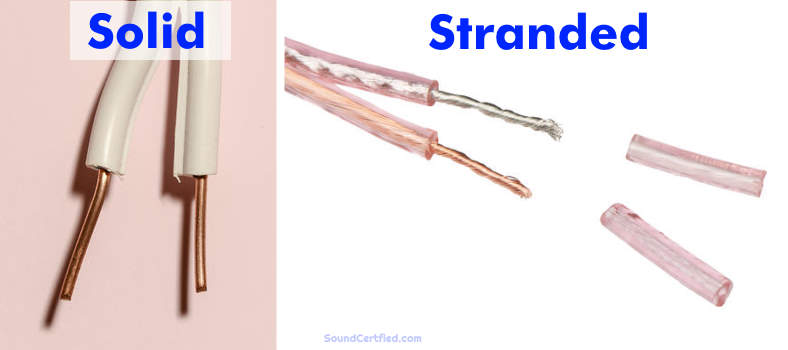
Solid wire uses a single electrical conductor, either solid copper, aluminum, or some combination. Solid types are used for home and building wiring installation as it doesn’t need to flex once in place. It’s designed for optimal electrical current handling at a given wire gauge (its conductivity is better than that of a stranded wire type at the same cross sectional area).
By comparison, stranded wire uses an arrangement of individual smaller wires twisted or bundled together to provide flexibility. It’s commonly used for things like lighting fixtures, appliances, and speaker installations all of which may need a curved path or to be moved occasionally.
The number of wire conductors in a stranded type, as well as the strand gauge, affects the wire’s current rating and resistance per foot in Ohms.
This doesn’t happen with stranded types – meaning it’s easy to see why you should avoid solid for installations where it’s subject to vibration or movement.
What is special about speaker wire?
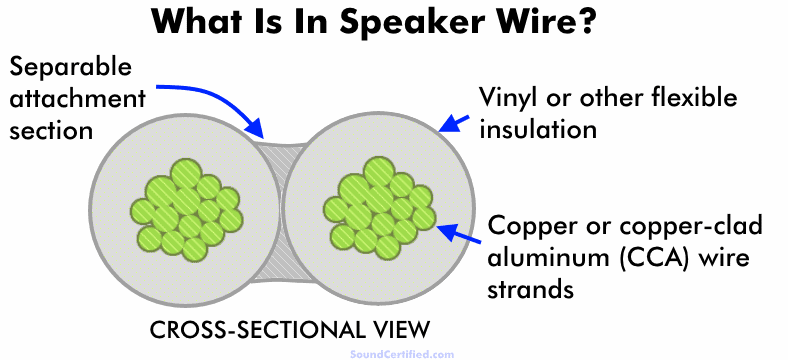
As I mentioned earlier, speaker wire has some differences vs electrical wire:
- The wire jacket (insulation) is designed to be easy to separate and the insulation is often soft, making stripping it to bare wire less difficult.
- Speaker wire is not only usually marked on one conductor to show the polarity, but may use a different color wire for the positive vs the negative conductor.
- Speaker wire is often sold with oxygen-free copper or other audiophile / high-performance characteristics. It also uses a finer wire conductor strand to add more flexibility.
- Speaker cable wiring can be found in all sorts of colors including clear wiring insulation.
It’s also often sold in common lengths on rolls such as 12 feet, 25 feet, 50 feet, and so on. These days speaker wiring is more and more commonly made with CCA wire and not pure copper as you’ll see below.
Can I use electrical wire as speaker wire?
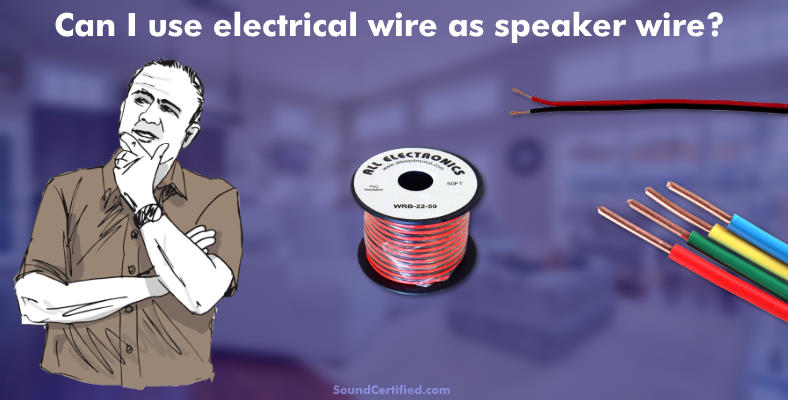
Yes, stranded electrical wire can be used as speaker wire. Solid core electrical wire should be avoided although it will work if needed.
Some examples of electrical power wire that works well for speakers are:
- Lamp cord wire (lamp and light fixture 2 conductor wire).
- Hook up wire (sometimes called zip cord).
- DC type power wire, including single-conductor wiring (these can be paired up if needed).
- Shielded cable with stranded conductors of adequate size (the shield won’t be used in this case).
In fact, lamp cord or hook up wire can be bought both in rolls or by the foot.
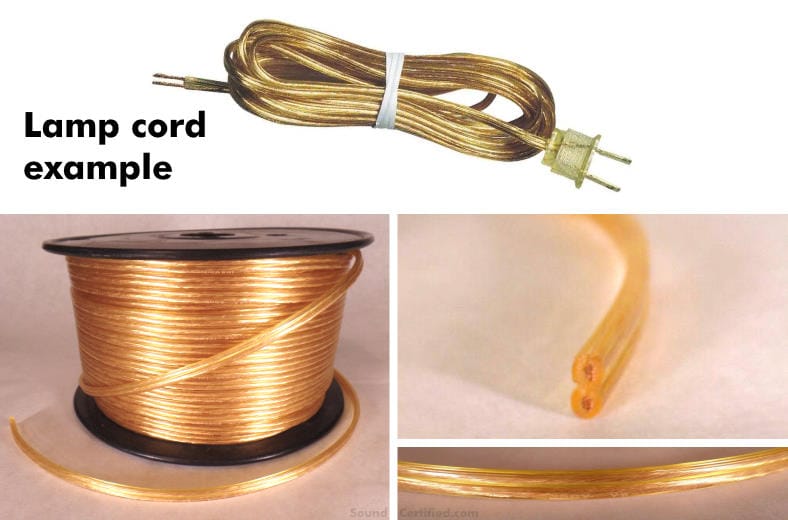
Lamp cord is one of the closest alternatives to speaker wiring, often also having one conductor labeled which can be used as a polarity marker. It will also work fine in common home stereo receiver connections that use banana plugs, an easy way to connect home stereo or surround speakers.
Coaxial cable, instrument cable, and other audio cable types should not be used to drive speakers. They’re designed for a low current, low voltage audio signal and are too small in size.
You’ll need a thicker wire.
Copper clad aluminum wire vs copper wire
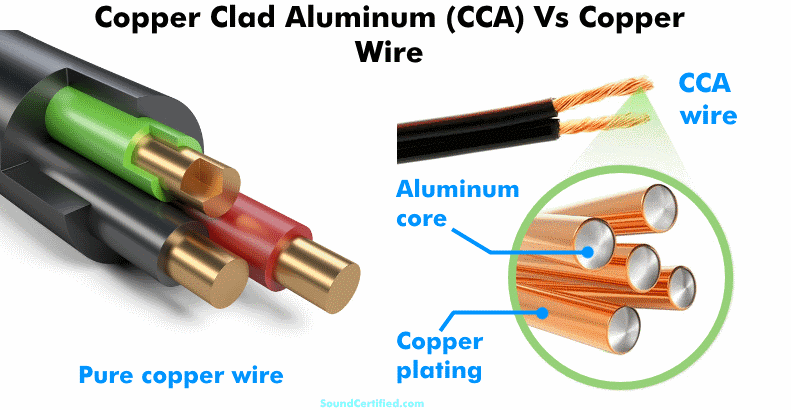
Copper clad aluminum wire (or CCA for short) has become more and more common due to the increase in the cost of copper metal. However, in a way, you’ll get ripped off if you’re not careful!
Unlike pure copper wire, CCA is a conductive material made up of an aluminum core with a thin copper plating on the outside. It looks the same from the outside – but it’s not as good as true copper wire with its very low resistance.
Is copper covered aluminum speaker wire any good?
CCA speaker wire has the same sound quality as copper wire, meaning it will sound the same. The problem is that aluminum isn’t as good of an electrical conductor as copper.
Aluminum has only 61% of the conductivity of copper (in other words, it has 39% more resistance) meaning you’ll need a thicker cable made of aluminum conductors to handle the same power that copper can. It’s also worth mentioning that it’s less flexible than pure copper.
For example, to replace 18 gauge copper speaker wire use a 16 gauge CCA wire.
Can I use speaker wire for 12 volt power?
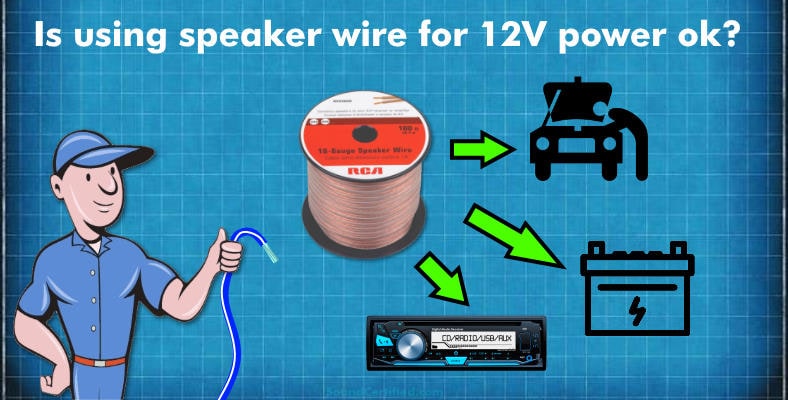
Absolutely yes, you can use speaker wire to supply 12 volt power and ground to all sorts of projects. Follow the same amperage rating for AWG wire size you’re using and you’ll be fine.
Personally, I recommend using the marked wire conductor as the positive side as that makes it easy to remember the electric wire polarity. For installations, I use the marked wire as positive for both speakers or 12 volt power.
Can telephone wire be used for speakers?
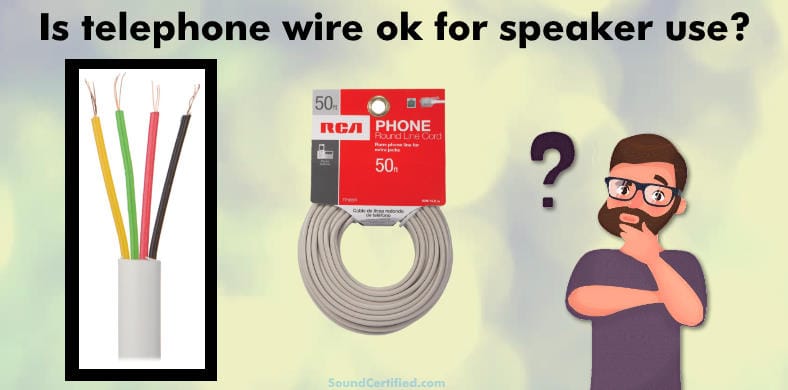
No, telephone wire is not recommended for powering speakers. Here’s a list of reasons why:
- Telephone wire uses a wire gauge that’s much too small for the power needed to drive most speakers. The thinner wire is usually a tiny 24 to 26AWG which can only handle a few watts.
- Cat 5, ethernet/data wiring, and telephone wire are very frail and aren’t designed to be moved, bent, or curved sharply. They can be damaged or broken a lot more easily than speaker wiring.
- Telephone wire is hard to strip and connect reliably, so I don’t recommend it for most people.
- Telephone wiring often requires a special connector type.
- It’s too small to connect reliably to speaker terminal outputs on an amplifier.
- By using a long wire length of telephone conductors, you’ll lose power stereo or amplifier power across it before reaching the speakers.
You’ll want to use a thicker speaker wire of a decent gauge wire size.
